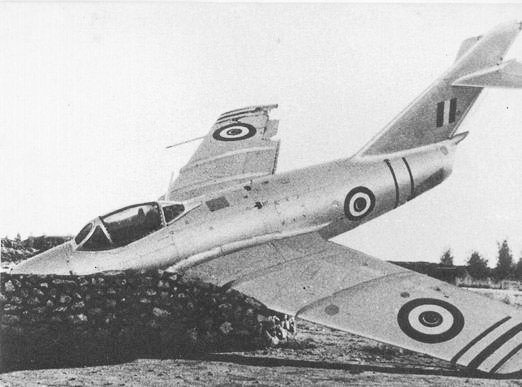


The Russian MiG 15
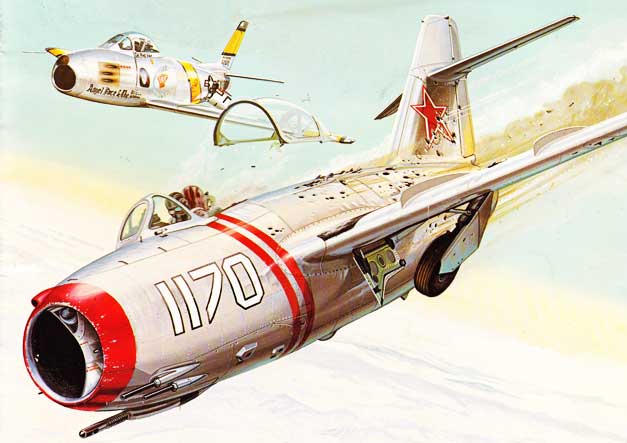
Note that the basic color is 'bluish' .That's to bring out the silver best when it's printed on silvered paper. You can print it like this however, and it looks fine. You'll need this little puppy to harass the F-86 Sabre Jet.
First flown in 1947, years ahead other countries, but still not able to exceed MACH 1. More than 5000 were build-not including trainer versions. Ours is pretty easy to put together.
The FG Mig-15 model is a good beginners model. Level 1. The number of parts is small and the fit of all of them is good. The wingfences are the only issue, as they are curved while the wings tend to build rather flat. I have made the Mig-15 a 1/2 doz. times and either cut down the bottoms of the fences so they are flatter, or cut a line in the wing that the fence can be fitted into. - avro202
Hi Chip, I built your Mig 15 model last week and was quite happy with the results ...Therefore I decided to do a couple of repaints. Feel free to share them with fellow modelers .
MiG-15 Russian Jet Fighter
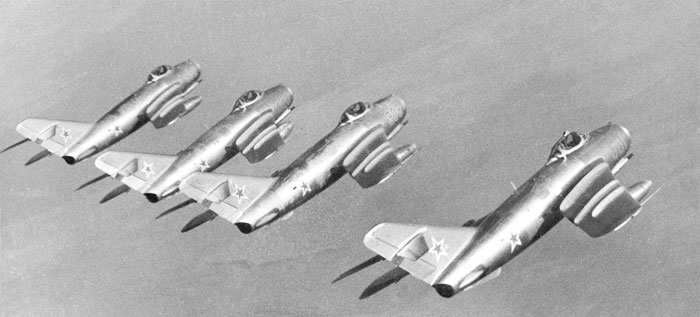
THE MiG-l5 was built following a requirement for a single-seat fighter with a maximum speed of Mach 0.9, good rate-of-climb to 32800ft a minimum duration of 1 hour and large-caliber cannon armament.
The powerplant was a Rolls-Royce Nene engine, still four years away from British service, handed over in conjunction with the 1946 Anglo-Soviet Trade Agreement. A German-derived engine intended to develop 4409 lb was to have been used, but development had hardly begun when the Mikoyan-Gurevich design bureau was offered the amazing windfall of the British engine. The fuselage had to be enlarged to accommodate the centrifugal Nene.
The first flight is believed to have been made on July 2,1947. Following the failure of the prototype, designated S-1310, during low-speed tests, boundary-layer fences were added to the wing and anhedral replaced dihedral. Other modifications included shortening of the rear fuselage, a reduction in the length of the tailpipe from 12 ft 51/2 in to 6 ft 6 in, lowering of the horizontal tail and sweep-back of fin and rudder.
The modified prototype was designated S-01 and first flew on December 30, 1947. A major problem was the tendency of the aircraft to move out of a tight turn into a spin, but this was overcome temporarily by the use of anti-spin rockets.
The MiG-15 was put into production and the initial aircraft were delivered to the Russian air force in the latter part of 1948. This was six years before any British swept-wing fighter entered service.
The powerplant for early production aircraft was the RD-45F engine, based closely on the Nene and made without obtaining a licence. A later version the MiG-15bis (MiG-155D) was powered by VK Klimovs later development of the Nene, the VK-l, which developed 6614 lb with water injection.
Initial armament of the MiG-15 consisted of two nose-mounted 0.9-in NS-23 cannon. This later became one 1.46-in N-37 cannon situated on the right-hand side, and two 0.9-in NS-23 cannon on the left-hand side.
There was under wing provision for drop-tanks, rockets or bombs. MiG-15bis production aircraft later had 0.9-in NR-23 revolver cannon instead of the NS-23 cannon.
Several other versions were produced: a trainer the MiG-15UTJ, MiG-15T, MiG-l5bisT; a two seat all-weather fighter designated SP-5, the MiG-155B, and a Polish version of the MiG-15bis, designated SBLim-2.The MiG-15 or MiG-15bis were used by the air forces of Albania, Algeria, Bulgaria, Cambodia, Czechoslovakia, China, Cuba, Finland, East Germany, Hungary, Iraq, North Korea, Morocco, Poland, Romania, Somalia, Syria, Tanganyika and the United Arab Emirates. More than 5000 fighters were built and an even greater number of trainers. Many of the latter may be rebuilt fighters, and several thousand UTI's are still used.
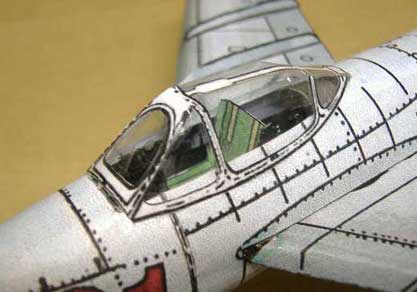 |
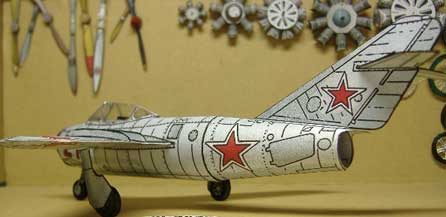 These are some photos of the Fiddlersgreen downloadable Mig-15 Russian Fighter jet presented by, Master Modelmaker, Bob Martin |
|---|---|
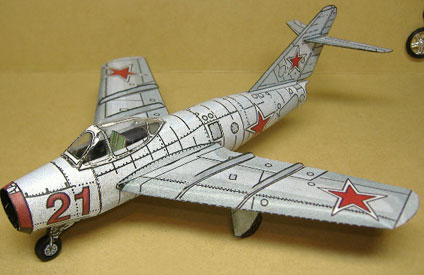 |
The MiG 17
Developed by the Mikoyan and Gurevich design bureau, the MiG.17 was an expected evolutionary development of its MiG-15 predecessor. Though not as well known as the MiG-15, eventually it was manufactured in similar numbers over a production life spanning from 1950 through early 1957.
Following prototyping and the end of state
trials during 1952, the MiG-17 entered the operational Soviet
air force inventory as a complement to the MiG-15. Because it
was equipped with the powerful VK-1A turbojet engine found in
MiG-15bis version, its performance was exceptional. The latter
was, in fact, enhanced by the MiG-17's almost totally new wing
design. This employed a thinner wing section, a greater sweep
angle (it actually was swept in two sections with t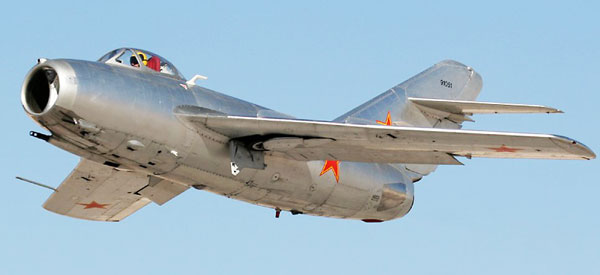 he inboard
section at 430 and the outboard section at 470), and other changes.
he inboard
section at 430 and the outboard section at 470), and other changes.
Fuselage differences were minimal, with the empennage section being stretched to accommodate a longer exhaust pipe, and later an afterburner, and the airbrake's were redesigned and enlarged. Other changes noted were slightly revised horizontal and vertical tail surfaces, cockpit upgrades (including an improved ejection seat), and the addition of a ventral fin (for improved high-speed and high angle-of-attack directional stability).
A number of different production versions of the MiG-17 were identified by NATO observers during the course of the type's service life. Some, for instance, were equipped with a combination bullet/lip-type radar installation in the intake; some had repositioned airbrake installations; some had revised windscreen configurations to accommodate cockpit equipment changes; and some special Polish-manufactured models were equipped with thickened wing root sections to provide aerodynamic fairing's for special dual-wheel main landing gear and a drag-chute (permitting rough field utilization). Each of these was assigned a specific letter following the formal Fresco NATO code name (i.e., Fresco-A, Fresco-B, etc.).
Numerous "third-world" countries have found the MiG-17 to their liking, and reports available to western sources indicate it is easy to fly, distinctly simple to maintain and operate, and relatively inexpensive to own and maintain. At least twenty counties either still have it on inventory, or have had it on inventory in the past.
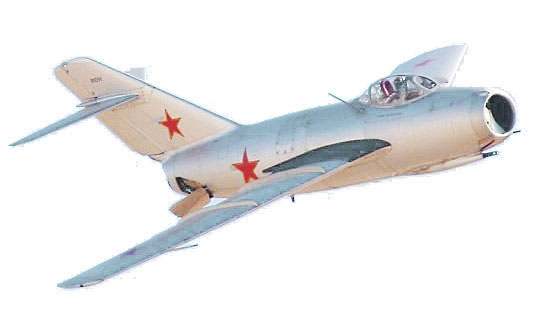
The MiG-15, whatever its design shortcomings, deserves its place in aviation history as the first jet fighter to enter wide-scale service in the USSR and its satellites; and for the sheer numbers in which it was built, which some authorities put as high as 18,000 - a record for jet aircraft production. It was designed for easy mass production and maintenance, ideal for export to the USSR's less-developed satellites. It was licence-built in Czechoslovakia as the S-102, in Poland as the LiM-l, and in China. MiG-15 losses in the Korean War were II times those of its Allied counterpart, the North American F-86 Sabre, due as much to the inexperience of their Chinese and North Korean pilots as to technical weaknesses (those flown by Russian 'technical advisers' were noticeably better opponents). It introduced many air forces to the age of jet flying.
The major variants were the MiG-15S and SD - the major production fighters; the MiG15T and bisl target tugs; the MiG-15R and bisR reconnaissance fighters: the MiG-15P all-weather fighter; the MiG-15SE fighter-bomber; and the MiG-17UTI 2-seat trainer. Although the MiG-15 (NATO Fagot) has long been superseded in its front-line capacity, many countries - including China, Cuba, Indonesia, Morocco, Syria and the United Arab Republic - used the MiG-l5UTI (Nato Midget) into the late 1960s, and some are still serving in the early 1980s. In the UTI version the basic MiG-IS fuselage is adapted to accommodate a second crew position in tandem beneath a elongated canopy, the fuel capacity thus displaced being made up by slipper tanks on the outer wing panels. The first MiG-ISUTI was flown in 1949, entering Soviet Air Force service three years later as a replacement for the Yak-I7UTI. It retained the two 23mm Nudlelmann cannon of the early fighters, and was used for operational conversion, but latterly for advanced flying and armament training.
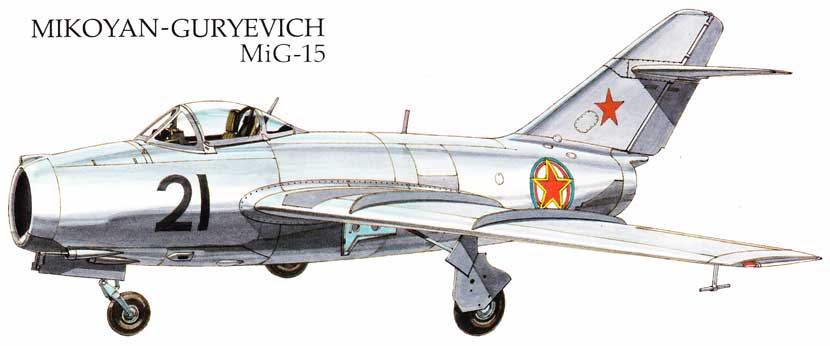
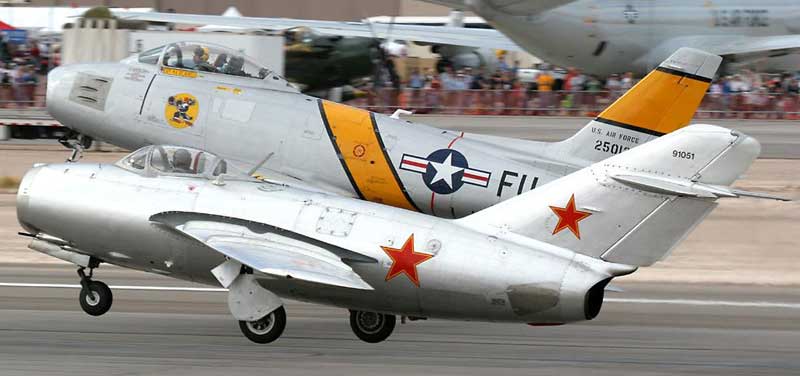
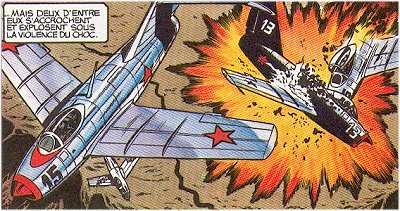
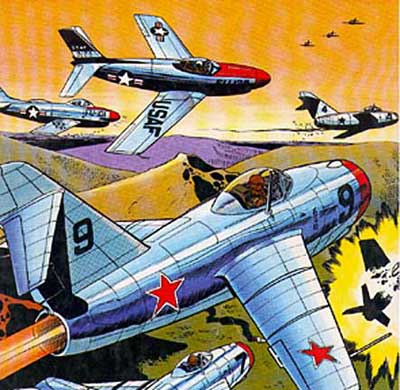
A couple Korean action shots from the Terry and The Pirates comic strip
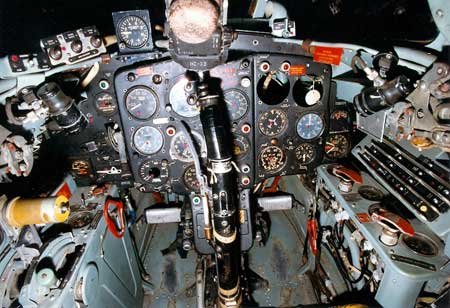 |
| Cockpit of the MiG-15 |
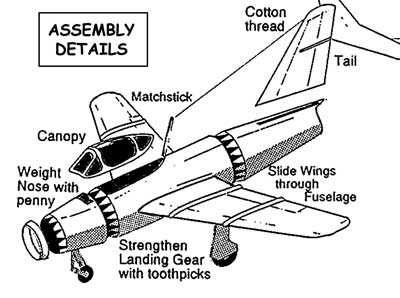
Specifications for the MiG-15bis
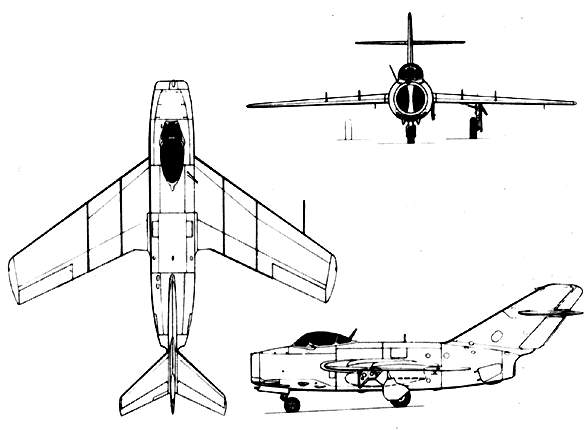 |
Crew: MiG-15bis=1, MiG-15UTI=2 |
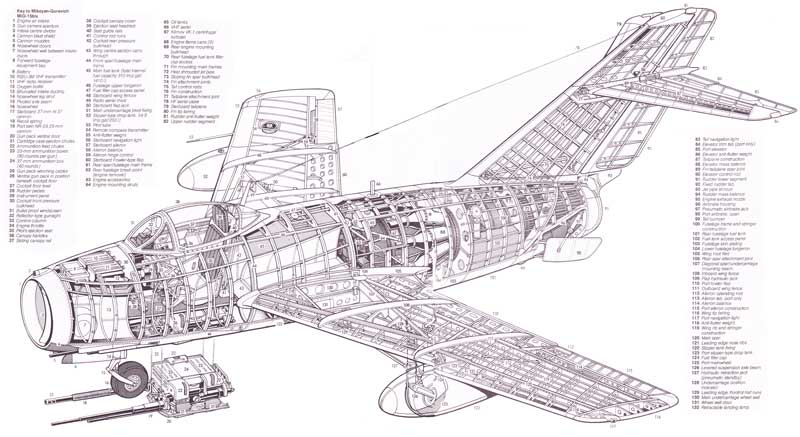 |
This MiG-15 cutaway is available in full sized PDF-- FREE-- included in your MyModels folder! |
